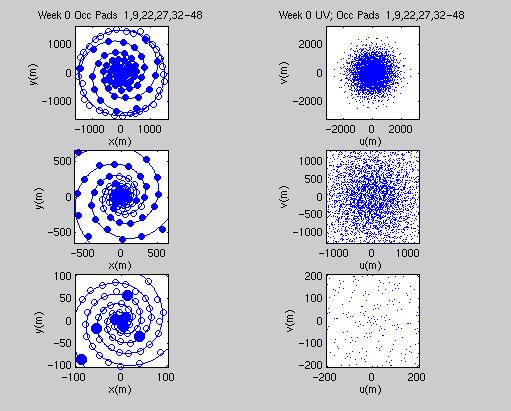 |
ABSTRACT
Imaging simulations have been carried out with a version of the
spiral zoom array presented in Conway(2000) (Memo 283). Two test images
were used, one based on a VLA image of Cygnus A and another based
on an OVRO CO map of M51. Both snapshot and long track CLEAN simulations
were carried out. The results were compared with those obtained for
a single ring array with similar resolution. The single ring array
has a fairly uniform coverage out to its maximum baseline and therefore
provides a useful constrast to the spiral zoom array which has a
strongly tapered (almost gaussian) coverage. For both test images the spiral
array gave better imaging performance. The difference was particularly
large for the case of the long-track observations when the rms errors
were 10 times larger for the ring than for the spiral arrays. This
large difference arises because the large near-in sidelobes of ring
arrays, caused by the sharp edge to the uv-coverage, persists even
after a long track.
These simulations illustrate that it is important
to consider that deconvolution requires both extrapolation
of the uv data as well as interpolation between uv points. A
naturally tapered uv coverage appears to provide
more constraints on the necessary extrapolation than for the case
of ring arrays. More imaging simulations must be carried out,
paricularly comparing zoom arrays to the somewhat tapered 'donut' or
'double ring' arrays that have been proposed. However, these intial
tests show that spiral zoom arrays have good imaging
performance as well as high observing efficiency (Conway 2000,
Memo 283)
and the ability to have finely adjustable resolution (Conway 1998,
Memo 216).
1. INTRODUCTION
To test the imaging performance of spiral zoom arrays, some
snapshot and long track imaging simulations have been
carried out. Two test images were used, one based on a VLA
Cygnus A image (R.Perley & C.Carilli) and the other on an OVRO
CO image of M51 (kindly donated by Susanne Aalto). The imaging
performance has been compared with that of a 'generic'
single ring array having the same resolution.
2. SPIRAL ARRAY
The spiral array tested was based on that presented in
Conway(2000), ALMA Memo 283. Almost the same arrangement of pad
positions were used. We chose to simulate the case when the
telescopes were arranged in their largest spiral-like configuration.
This array gives a resolution of 0.135 arcsec at 230GHz. For higher
resolutions the telescopes can be mostly place on a 3km diameter
outer ring (see memo 283, Fig 1 top). For smaller resolutions the
antennas are placed in smaller spiral configurations which should
have similar imaging performance to the array tested. The imaging
tests here therefore are a general test of the imaging performance
of a spiral geometry.
In the array tested the occupied pads on each arm are numbers 32 to 48,
(see memo 283 for the numbering definition)
and in addition pads 1,9,22 and 27, which is slightly different than
in memo 283. Occupying these lower numbered pads
improves the short spacing coverage of the array, and samples
baselines down to 1.2 antenna diameters.
As the array zooms
inwards and antennas are taken from the largest pad numbers to
fill up the lower numbered unoccupied pads
(see Memo 283), but pads 1,9,22 and 27 remain occupied. Links
to the antenna coordinates for this spiral array in UVCON format
are given in the Appendix.
Note that to improve mosaicing preformance it might be
advantagous to replace the 4 inner 12m telescopes (those on pad
1 of each arm and at the centre) with an array of 16 to 25
smaller (e.g 6m) dishes (Wright 1999,
Memo 272).
 |
3. RING ARRAY
The comparison ring array was chosen to have the same resolution
of as the spiral at 230GHz. This is found to occur when it has
a diameter of around 1500m (i.e. half the total size of the
spiral arrays). Antennas were initially place evenly around the
ring and were then perturbed in azimuth and radius by gaussian noise
with sigma 0.05 radians and 0.05 of the radius respectively. This
procedure was needed to remove ring and spike-like structure in the
uv coverage of the perfectly regular ring arrays.
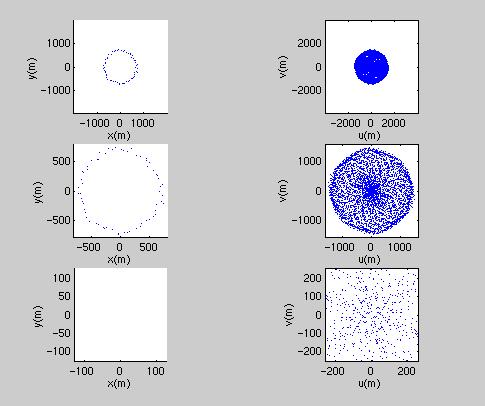 |
4. UV COVERAGES
Below are shown the zenith snapshot and long track uv coverage for the
spiral and ring arrays respectively. The declination for the long track
simulation was taken as -23 degrees and lasted for +/- 3hrs
around transit.
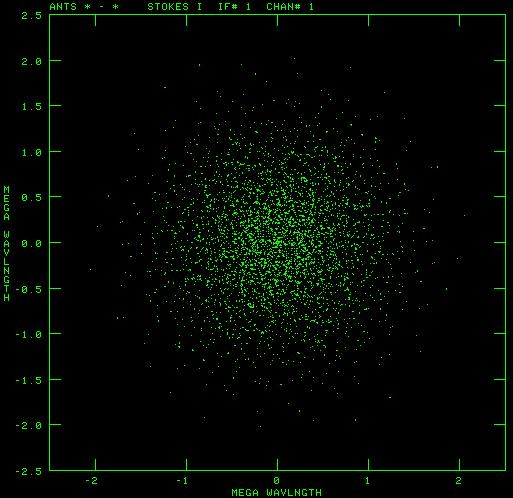 |
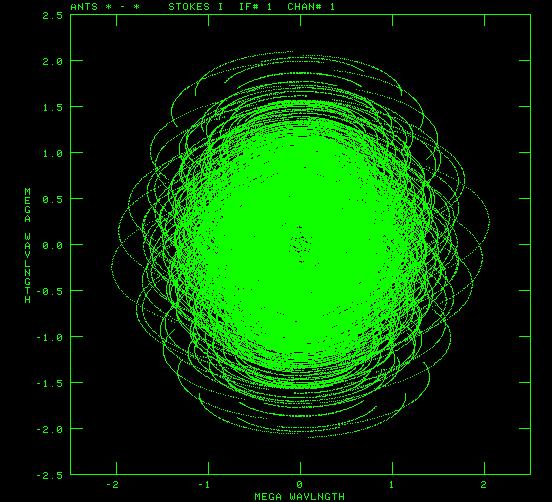 |
Spiral-Array Zenith Snapshot | Spiral-Array 6hr Track (Dec = -23) |
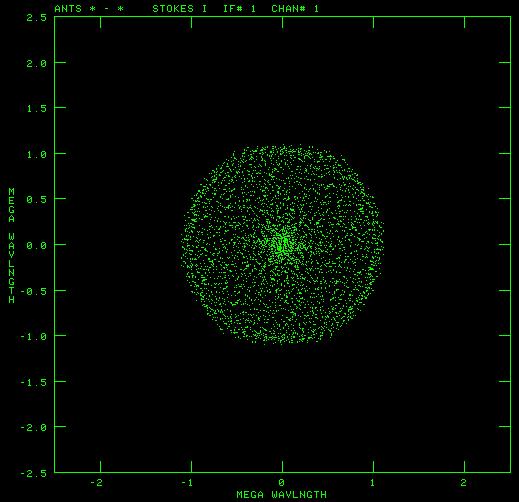 |
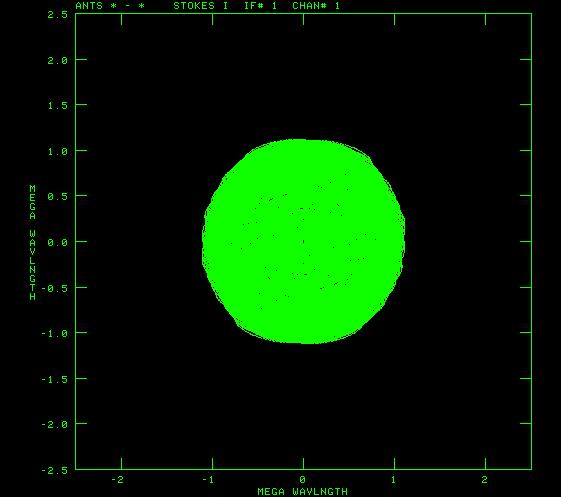 |
Ring-Array Zenith Snapshot | Ring-Array 6hr Track (dec = -23) |
5. DIRTY BEAMS
Dirty beams were calculated assuming pure natural weighting
(UVWTFN='NA', ROBUST=5). The cellspacing was 25mas, and the images
below are 512 pixels square. For the long tracks it
was assumed that all uv points had the same data weight with
no account taken for increased noise as a function of elevation.
The resolution for the snapshots found from fitting the main lobe
with a gaussian were 135mas FWHM circular for both the ring and
spiral arrays. For the long track observations the FWHM
increased slightly in the East-West direction to be 146mas
for the spiral and 148mas for the ring. The small increase
in resolution is what is expected if one considers the
long track dirty beam as the linear sum of snapshot beams
at each integration, these being in turn versions of the zenith
snapshot beam rotated and stretched in one direction. Since
the minimum elevation for the long track is around
el_min= 45 degrees the stretching for the long track beam
is order half of 1/sin(el_min).
While it is true that in centrally condensed uv coverages, such as
those from a spiral array, uv points from subsequent integrations
are very close together; the increase in the ratio of
densities in the inner and outer parts of the uv plane is
only a weak function of the length of the experiment if
low elevations (<30 degrees) are avoided. To see this
consider an array at the South pole having a uv coverage which
is two rings observing a source at the South pole.
Note below the large ringlobes for the ring array (see Figs 4,5, bottom).
In the North-South
direction these sidelobe do not decrease significantly even for a long track
(see Figs 4,5, bottom right), this is because they are due to the
sharp edge to the uv
coverage. In contrast because it is highly tapered even the spiral snapshot
beam has very small near-in sidelobes, and only the occasional random
peaks in the snapshot beam (see Fig 4, top left). As we go to long tracks the
spiral array sidelobes decrease significantly in contrast to the
case of ring arrays where the peak sidelobe remains at about 15%
of the main lobe.
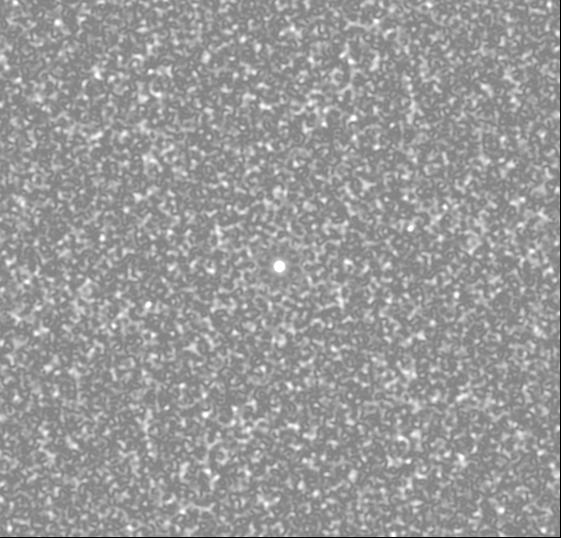 |
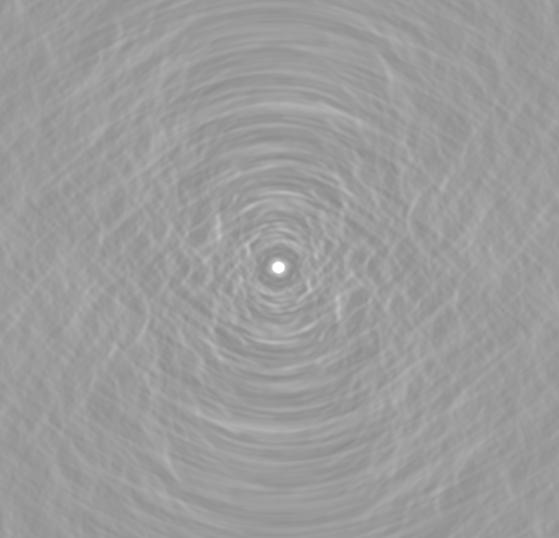 |
Spiral-Array Snapshot | Spiral-Array 6hr Track |
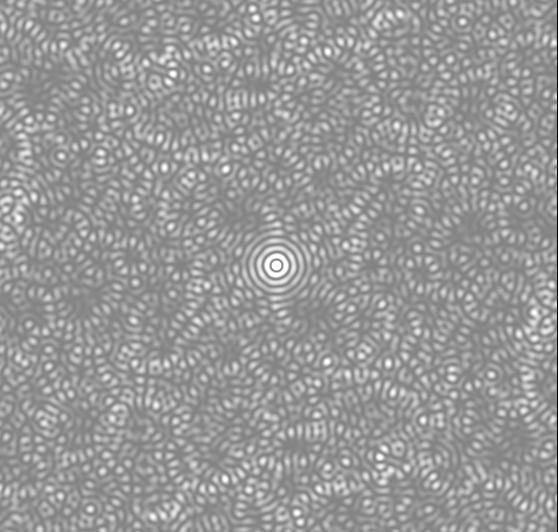 |
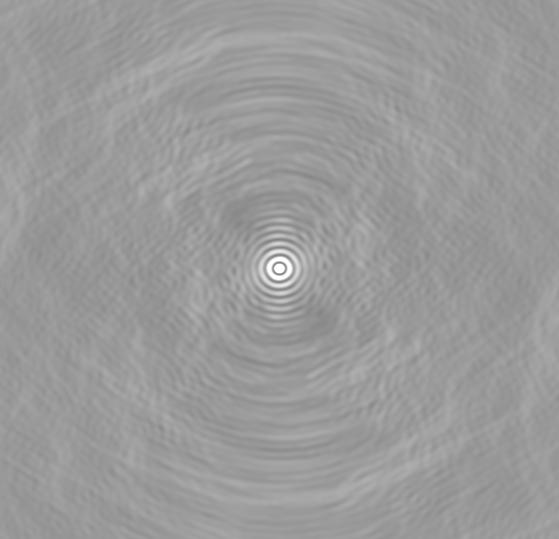 |
Ring-Array Zenith Snapshot | Ring-Array 6hr Track |
6. DIRTY BEAM SLICES (click for higher resolution)
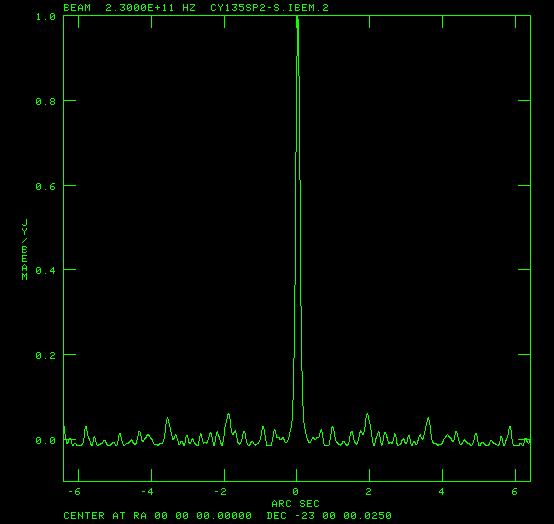 |
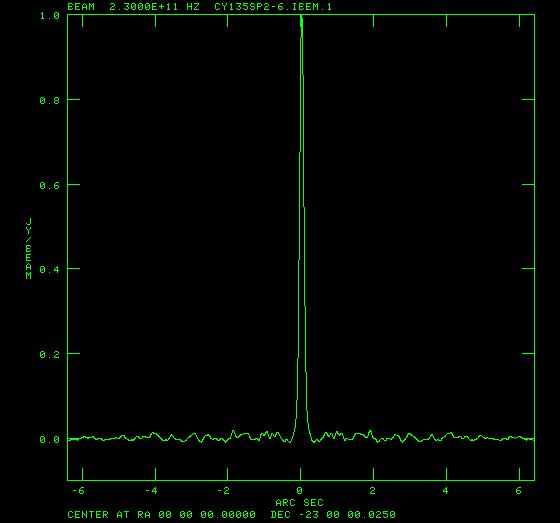 |
Spiral-Array Zenith Snapshot | Spiral-Array 6hr Track |
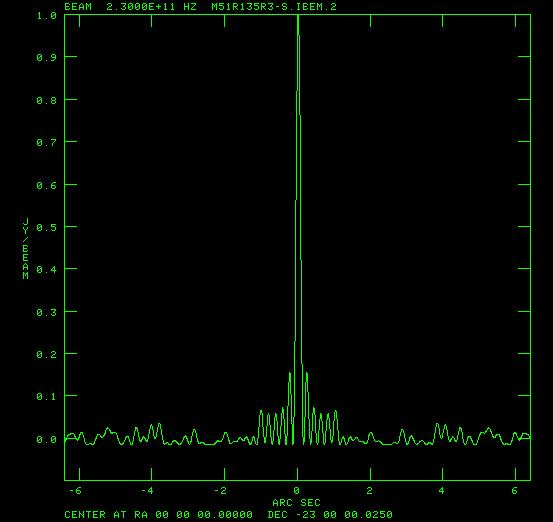 |
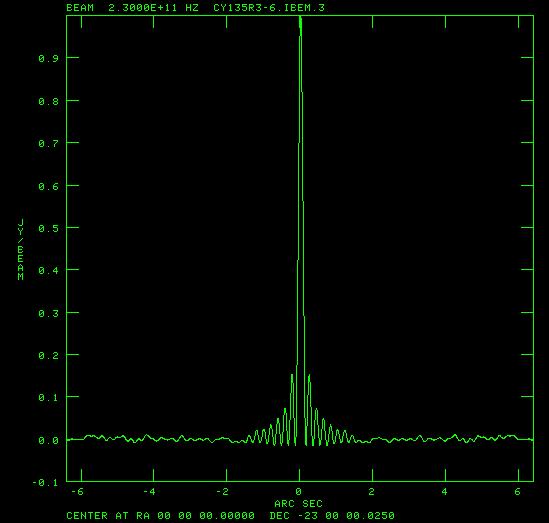 |
Ring-Array Zenith Snapshot | Ring-Array 6hr Track |
7. TEST IMAGES
Two test images were used in the simulations. One is
based on a VLA image of one lobe of Cygnus A (Perley, Carilli et al) and
one is based on an
OVRO CO image of M51. Below are the images, and the falloffs
of Log amplitude with uv distance they exhibit. The images have
cellspacing of 25mas and sizes of 512 pixels square. The map
units are in Jy/pixel, so they are considered as the true brightness
distributions of the test sources and not to be convolved with any
restoring beam. FITS versions of the test images can be obtained by
ftp (see Appendix).
|
|
|
Cygnus A image | Cygnus A, Log Amp vs uv distance |
|
|
|
M51 Image | M51, Log amp vs uv |
8. IMAGING SIMULATIONS
Imaging simulations were carried out for the above two test images for
ring and spiral arrays for both snapshots and long tracks. In each
case noiseless data was created using AIPS task
UVCON, using the arrays described in Sections 2 and 3 and assuming
the observing frequency was 230GHz.
CLEAN deconvolution were performed using IMAGR, pure natural
weighting, with 20,000 iterations for the snapshots and 50,000
for the long tracks. MINIPATCH=201 pixels, gain=0.1. The images
were made 1024 pixels square with 25mas cellspacing but only
the inner quarter of each dirty image was cleaned. All images
were restored with a circular beam of FWHM 135mas.
Finally error images were formed by subtracting a version of the
true image convolved to 135mas resolution.
8.1. CYGNUS A - SNAPSHOT SIMULATIONS (Click Images for details)
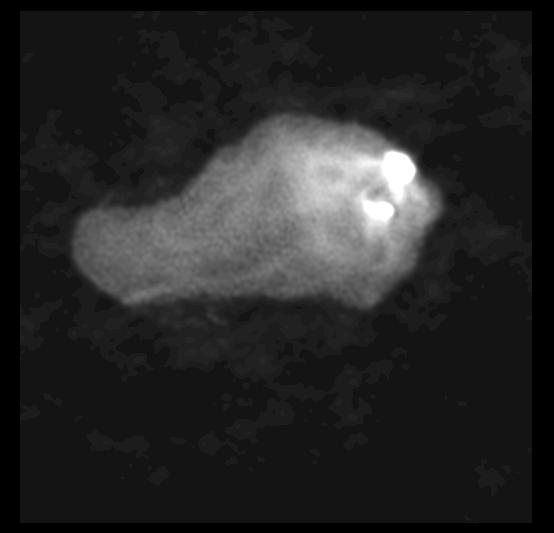 |
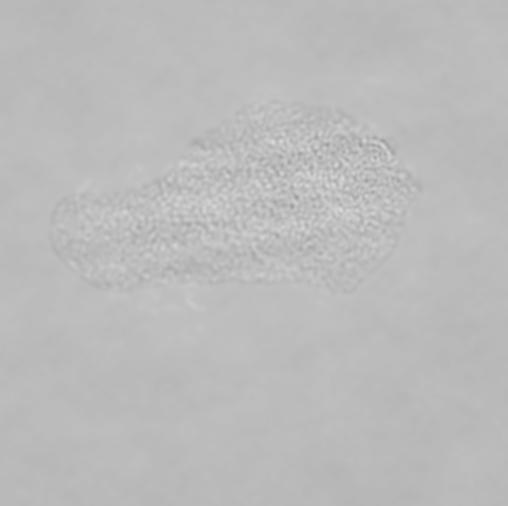 |
Spiral-Array Image | Spiral-Array Errors |
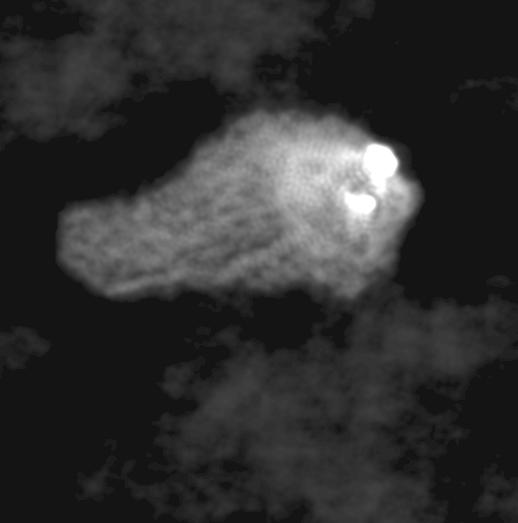 |
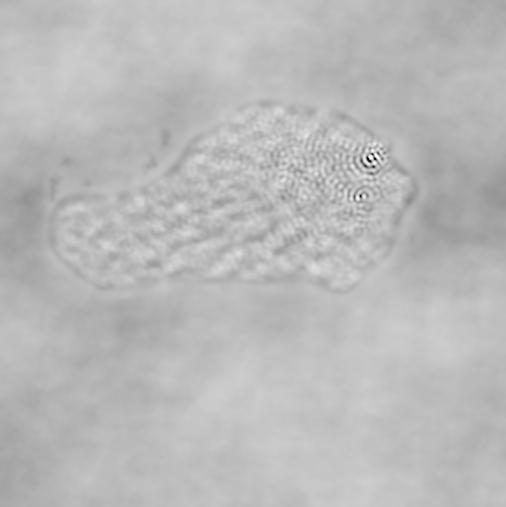 |
Ring-Array Images | Ring-Array Errors |
8.2. CYGNUS A - LONG TRACK SIMULATIONS (Click Images for detail)
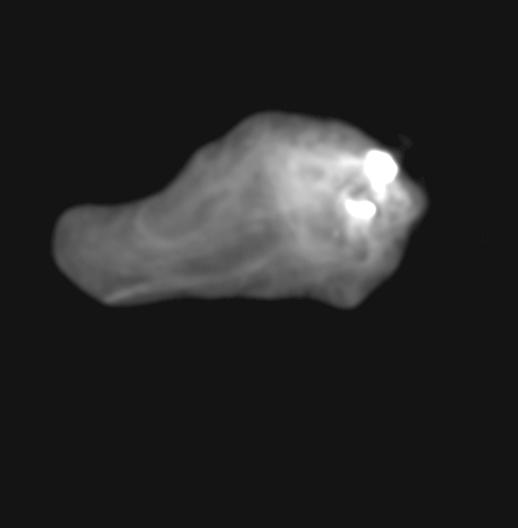 |
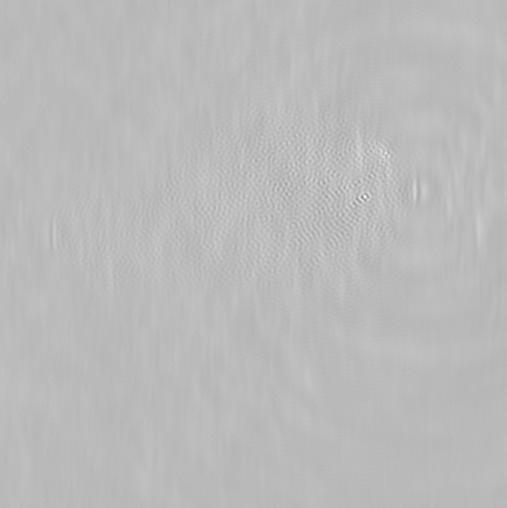 |
Spiral-Array Image | Spiral-Array Errors |
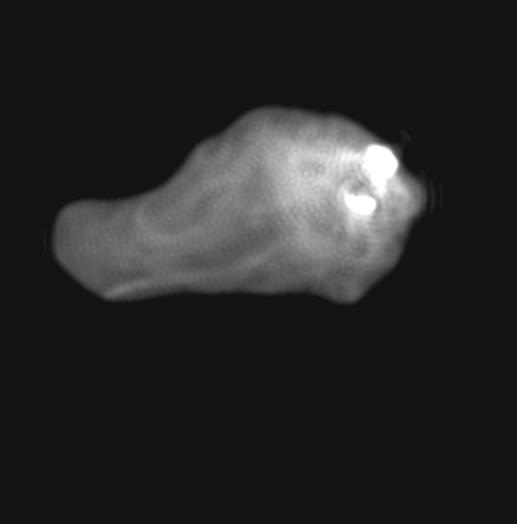 |
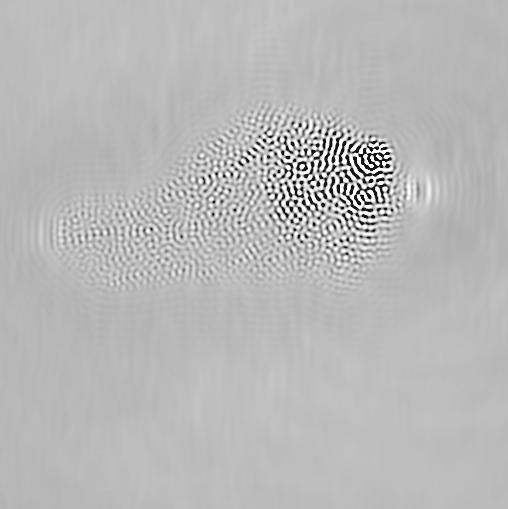 |
Ring-Array Image | Ring-Array Errors |
8.3. M51 - SNAPSHOT SIMULATIONS
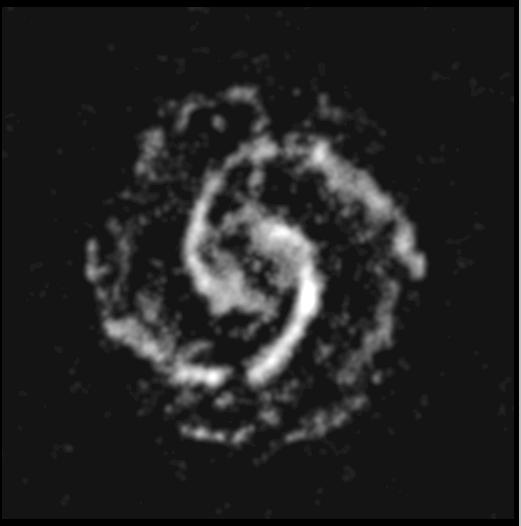 |
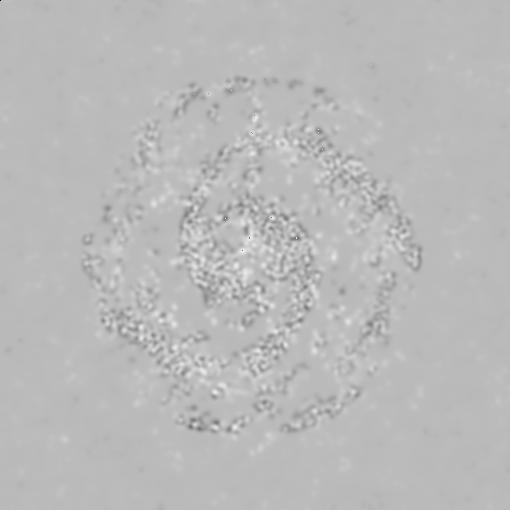 |
Spiral-Array Image | Spiral-Array Errors |
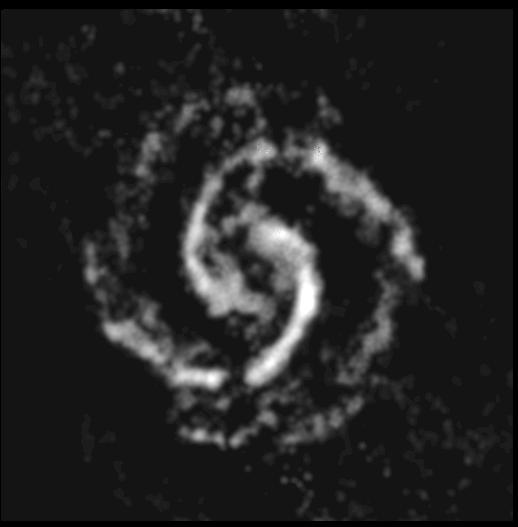 |
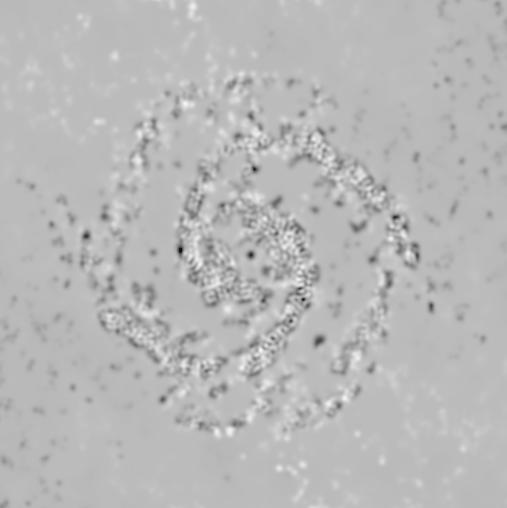 |
Ring-Array Image | Ring-Array Errors |
8.4. M51 - LONG TRACK SIMULATIONS
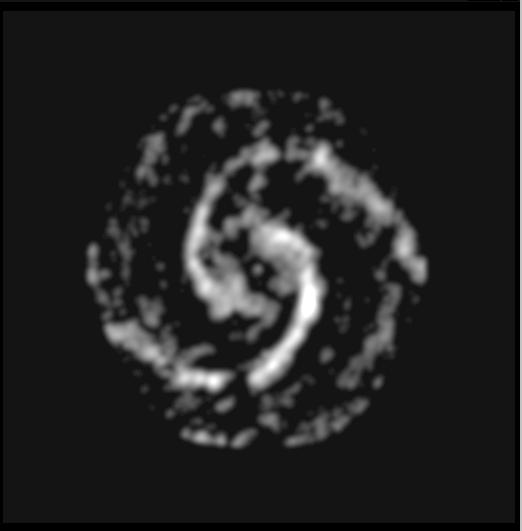 |
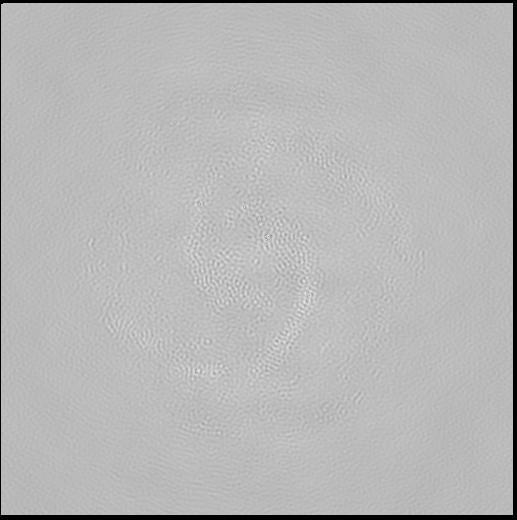 |
Spiral-Array Image | Spiral-Array Errors |
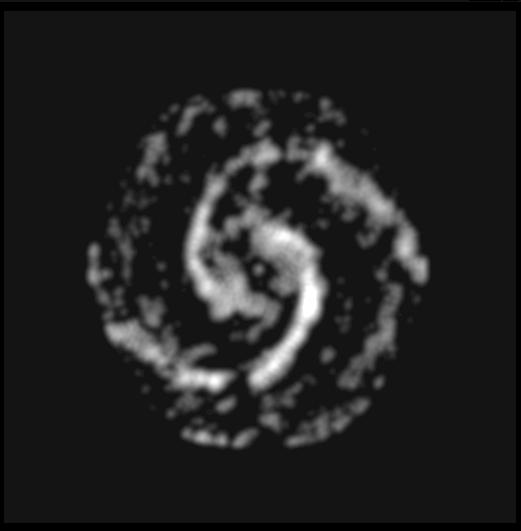 |
 |
Ring-Array Images | Ring-Array Errors |
9. DISCUSSION
The simulations above show that, at least for the two test images used, the
spiral array gave significantly better image reconstructions than the ring
array, both for snapshots and for long tracks. For Cygnus A snapshots
for instance (see Figure 7) the rms error was a factor of 2.02 less
for the spiral than when using the ring arrays. The difference was
even more dramatic for the long track simulations (see Figure 8) in which
the spiral array rms error was better than that for
the ring by a factor of 13.23.
For the M51 test image (see Figures 9 and 10) the ring had rms errors
larger than the spiral by factors of 1.47 and 13.85 for the snapshots
and long tracks respectively.
The reason for the superior imaging performance of the spiral
array is that the uv coverage is highly tapered. The sharp edge
to the uv coverage which occurs for ring arrays and gives large
systematic near-in sidelobes is therefore avoided.
As shown in section 5, for ring arrays these
large sidelobes persist even in the case of long track
observations. It is clear that the dominant contributions to
the error images for the ring array reconstructions (see Figures
7 to 10) are all ripple-like errors having a wavelength
equal to the spacing of the near-in sidelobes.
In going from the dirty map to a more realistic estimate of the
sky brightness distribution, deconcolution algorithms can be
thought of as generating estimates of the visibility in regions
which have not been measured. This is clear if one
considers that the Fourier transform of the CLEAN
or MEM map is in general not zero in unsampled parts of the
uv plane, while in contrast the Fourier transform of the dirty
map is by definition zero in these regions. As a
aside to this, it follows that useful deconvolution
algorithms which generates new visibilities estimates must
be non-linear functions F of the dirty map in the sense that
F(I1(x,y) + I2(x,y)) does not equal F(I1(x,y)) + F(I2(x,y))
where I1(x,y) and I2(x,y) are dirty maps.
The visibilities that CLEAN, MEM or some other
non-linear algorithms must estimate which lie within the outer
boundary of the uv coverage we can call interpolations
while those beyond the edge of the uv coverage we can call
extrapolations . In going from the dirty map to
a better estimate it is clear that the deconvolution algorithms
must both interpolate and extrapolate. The extrapolation property
is needed to remove the large near-in sidelobes which arise
from the sharp edge to the uv coverage.
While A priori information such as positivity
and limited-support can greatly help the process of
interpolation between uv points it provides little help in
doing the necessary extrapolation (which
is effectively super-resolution). Ring-like arrays may be
attractive in providing uniform and even complete (e.g Woody
1999, ALMA memo 270) uv coverage within circular regions
but they have a large and probably unacceptable cost
since they provide little aid in achieving the necessary uv
extrapolation. The only way to avoid this problem for such
arrays is to heavily taper the data. Such tapering is very
expensive in lost sensitivity, since in order to reduce the
near-in sidelobe level to that obtained by condensed arrays
approximately 3/4 of the data has to be heavily tapered,
decreasing sensitivity (and resolution) by of order a
factor of 2.
In contrast the centrally condensed uv coverages
such as that provided by spiral zoom arrays can be thought of
(Conway 1998, ALMA Memo 216) as providing a dense well sampled
core uv coverage plus outlier points. These outliers
strongly constrain the extrapolation of the model to high spatial
frequencies. One argument that is sometimes made for a uniform
uv coverage within a circular boundary versus condensed is
the analogy with an optical telescope such as the HST. In
fact of course the effective uv coverage in this case is the
autocorrelation of the circular aperture and is
therefore in fact highly tapered. This high degree of tapering
is one reason that deconvolution is rarely needed for the HST
and points to having a similar condensed uv coverage
for ALMA.
It will be interesting to compare the imaging performance of
other types of arrays with spirals, particularly the minimum
sidelobe arrays of Kogan. These of course minimise the largest
sidelobe anywhere within the dirty beam while the gaussian-like
uv coverages of spiral arrays effectively minimise
the near-in sidelobes. The resulting uv coverages for the minimum
sidelobe arrays (see memos 212,
217, 226) are intermediate in
their natural tapering between single ring and spiral arrays, and have
significantly reduced near-in sidelobes compared to pure rings.
However the minimisation routine effectively concentrates on
reducing the far sidelobes once the near-in sidelobes have
been reduced below about 0.1. It seems likely that not all sidelobes
are equally important for improving imaging and so reducing the
systematic near-in sidelobes is probably more effective
in removing ripple-like artifacts.
This memo suggests that at least for some classes of images
spiral zoom arrays have superior imaging
properties in addition to their advantages in array operating
efficiency, construction and operating cost and tapering properties
discussed in Conway(2000) (ALMA Memo 283).
This present memo of course has only looked at two test images, and a wider
range of simulations should be carried out before final conclusions
can be drawn about imaging properties.
It will be particularly interesting to study the
multi-pointing (mosaicing) imaging capabilities of the array.
In addition all of the simulations here used CLEAN, other deconvolution
algorithms such as MEM might be worth trying; although MEM is
notorious for leaving beam patterns embedded in extended structure
and probably would not much help the Cygnus A reconstructions.
Links to the coordinates of the antennas used in the spiral array
presented in this memo are in UVCON format are given in the
appendix below for anyone who wants to do their own
imaging simulations with this array.
APPENDIX - TEST DATA
The UVCON format data for the spiral array used in this memo can be found
at
http://www.oso.chalmers.se/~jconway/ALMA/ARRAYS/
under the file name SP32T48-1-9-22-27.UVCON.
In addition FITS versions of the test images used in this memo can be
found at
http://www.oso.chalmers.se/~jconway/ALMA/IMAGES/
under filenames
CYGCW5.SUBIM and M51OV2.IMG. Versions of rhese model images convolved with
a restoring beam of 135mas can also be found in the same directory.